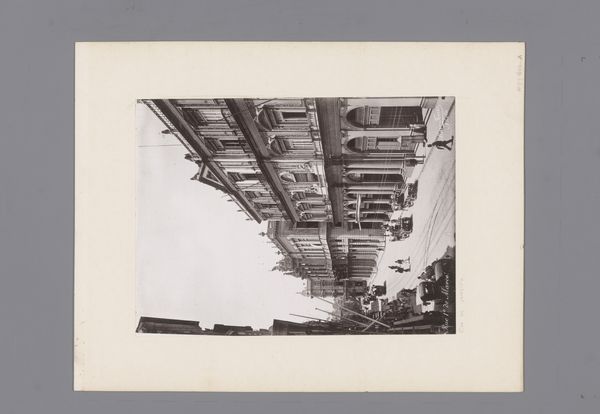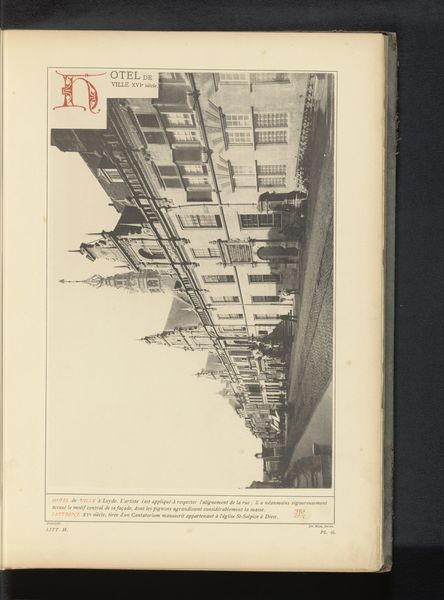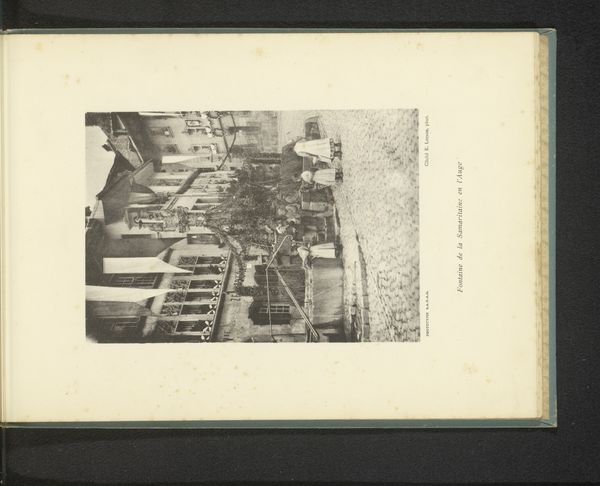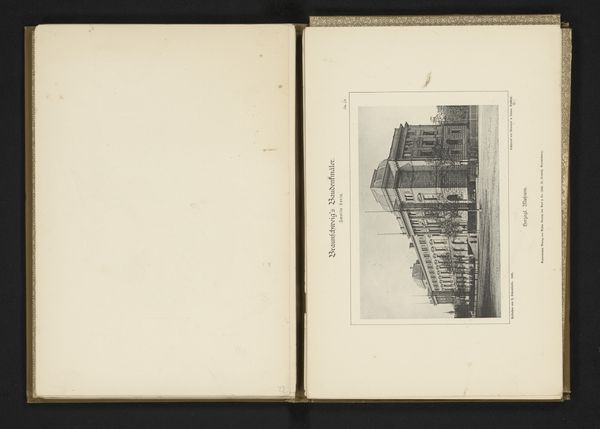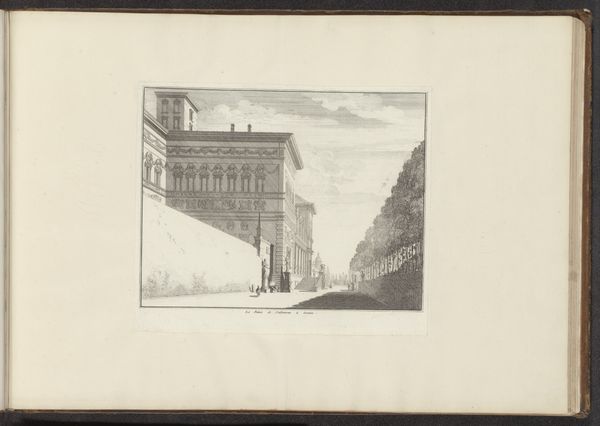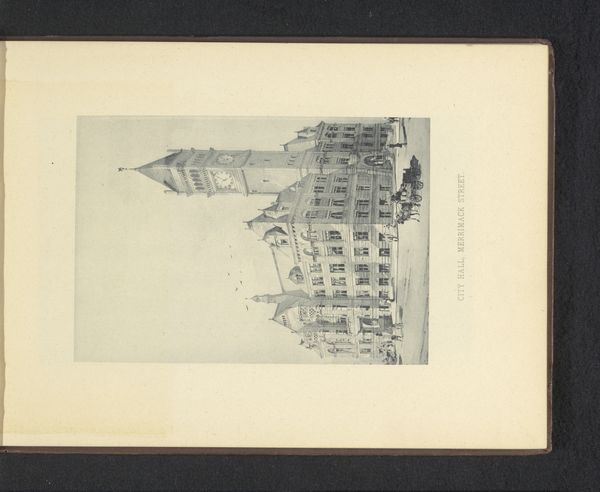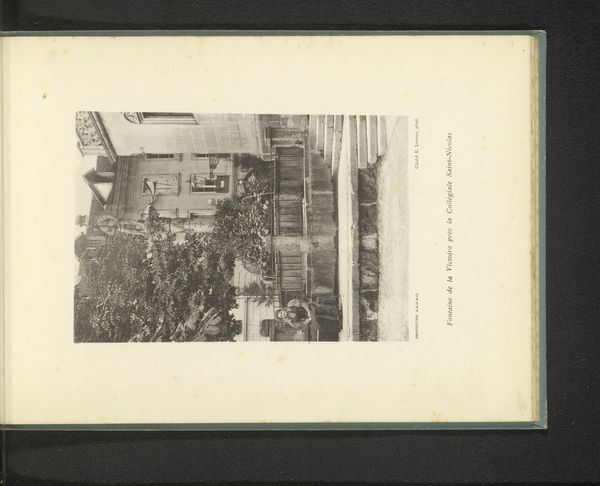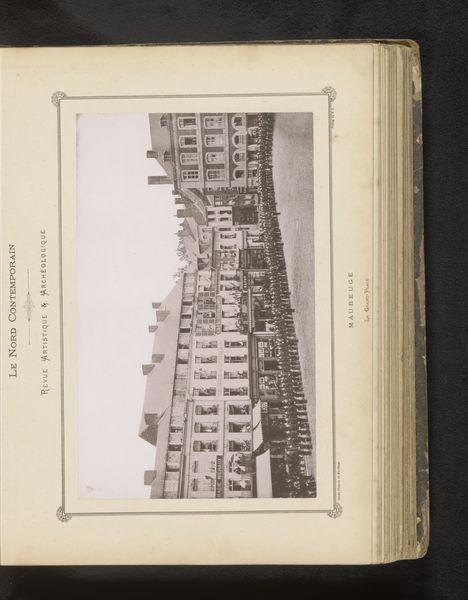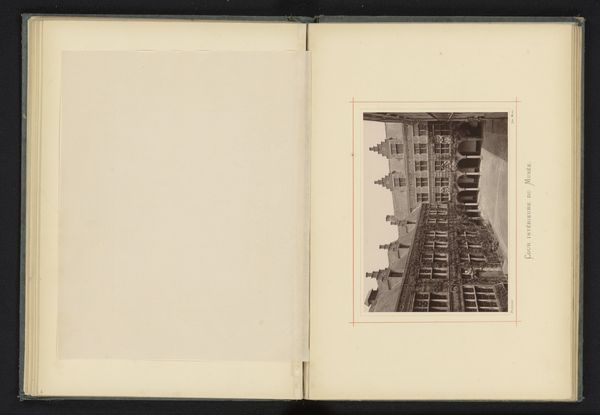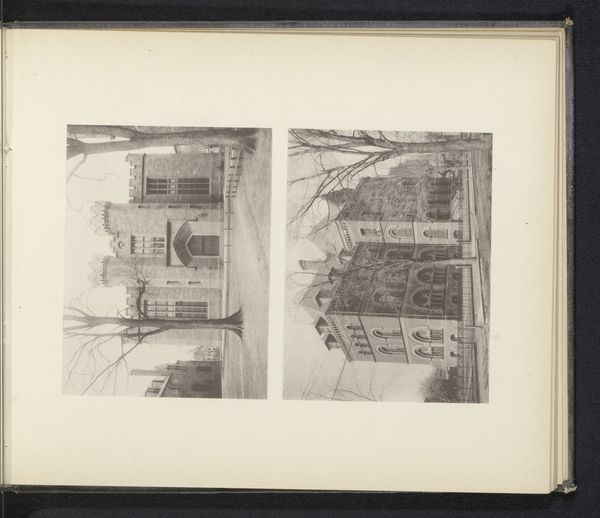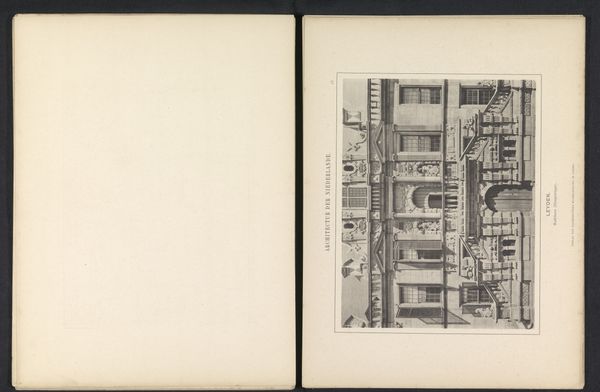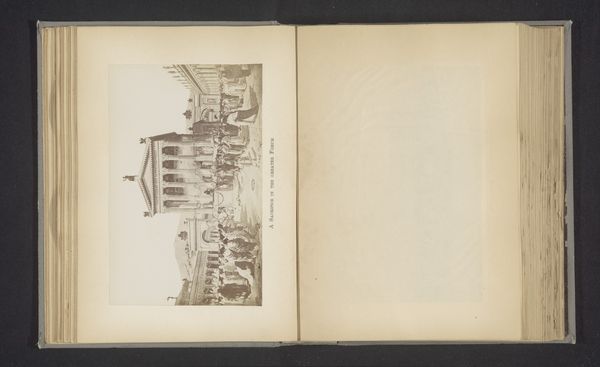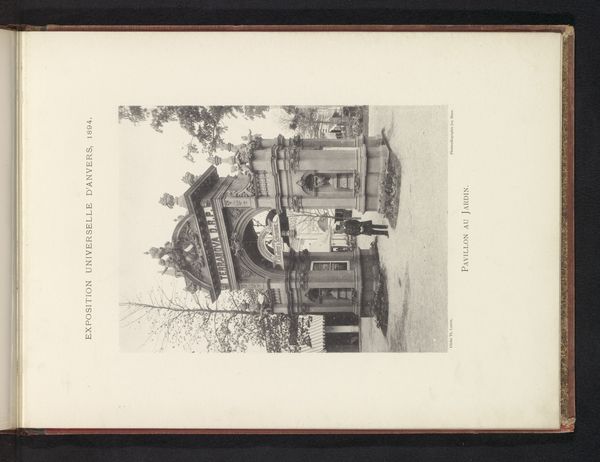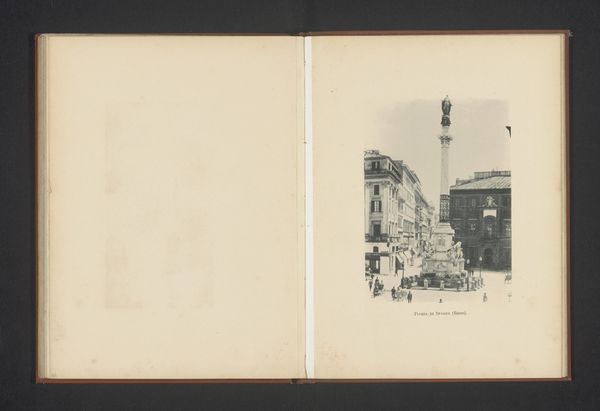
print, photography
#
pictorialism
# print
#
landscape
#
photography
#
cityscape
#
street
#
realism
Dimensions: height 162 mm, width 112 mm
Copyright: Rijks Museum: Open Domain
Curator: This photogravure by Ernest Lorson, created in 1897, is titled "Gezicht op de Rue des Chanoines in Fribourg" – that’s “View of the Rue des Chanoines in Fribourg.” What are your initial thoughts on it? Editor: Immediately, it feels hushed. The soft focus and muted tones create a sense of distance, almost like looking back through a memory. Curator: It's interesting that you mention memory. This particular street view, rendered in a photographic print, operates as a constructed perspective rather than a neutral recording. Consider the social implications of freezing a specific moment in Fribourg's history. Who gets represented, and whose narratives are privileged by this particular frame? Editor: The high vantage point also strikes me. It lends a sense of authority, a controlling gaze over the scene. I see how the composition emphasizes architectural details, almost as symbolic markers of permanence and power. Those shuttered windows… are they suggesting something concealed, secrets kept within the walls of the old town? Curator: Yes, consider also that Lorson was associated with pictorialism. Pictorialists often manipulated their photographs to resemble paintings or etchings, thereby elevating photography to the realm of high art. We should examine how this approach shaped the aesthetic values promoted by the work. Is it celebrating an idealized past, obscuring uncomfortable realities of class and social disparity? Editor: I agree. The way the light filters through creates such evocative contrasts; the composition focuses attention on certain structures and blurs others. These could represent conscious choices that speak to a deeper level. Also, the single figure there - it brings to my mind the psychological aspect of feeling separated in such a dense setting. It might mirror sentiments tied with solitude within a crowd, which became extremely relevant with modernization during that time. Curator: Precisely. And beyond Lorson's intention, the artwork carries the potential to speak about marginalized subjects, or suggest alternative futures that deviate from the dominant narratives. The city space always has had that double sense: the imposition of social roles, as well as the location where counter-practices happen. Editor: Right. When re-evaluating how this photograph continues to circulate, its value rests on sparking these kinds of complex, open-ended dialogues. Curator: Precisely, using critical methods reveals its enduring power beyond simply chronicling the old cityscape itself. It represents culture.
Comments
No comments
Be the first to comment and join the conversation on the ultimate creative platform.
